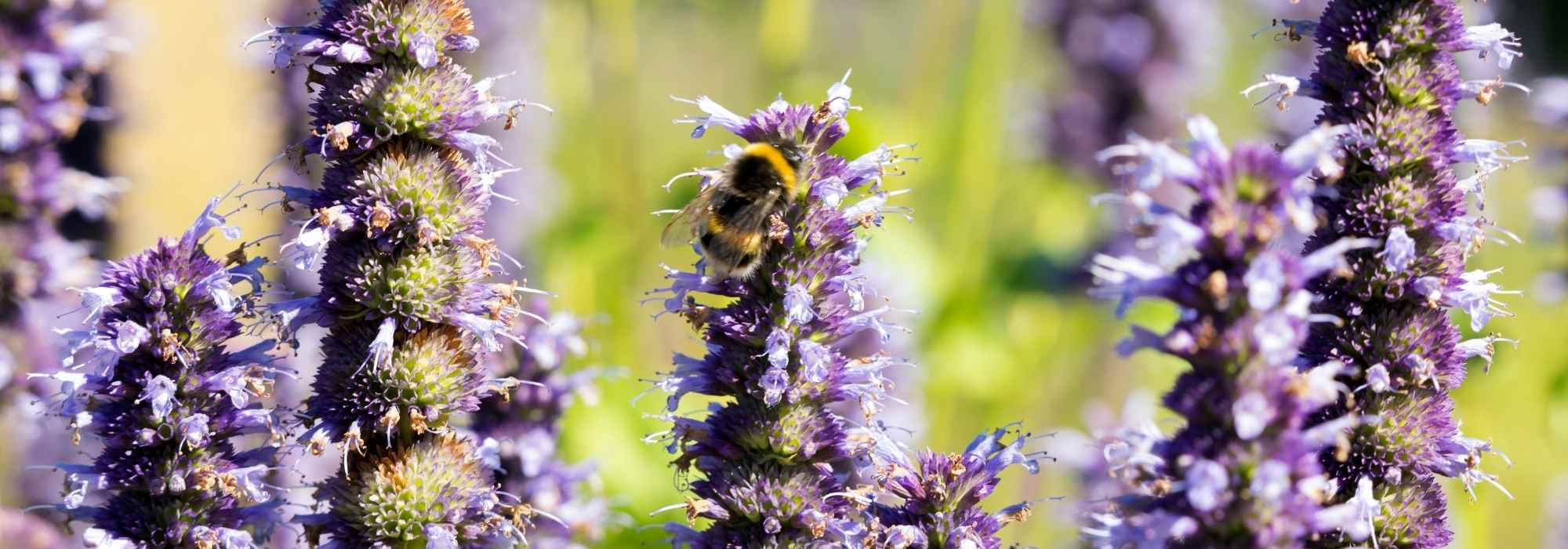
Flowers that attract bees
Our selection of melliferous perennials
Contents
Melliferous plants are on the rise! The flowers of certain perennials, annuals, and bushes serve as true larders for bees and pollinating insects. Rich in pollen and nectar, they play a significant role in biodiversity, meeting the needs of this insectivorous fauna, and helping gardeners increase the yield of their vegetables and fruits through enhanced pollination of surrounding flowers.
If you particularly want to attract bees, perhaps because you have a few hives, you should focus on melliferous flowers that are often blue, a colour they perceive well, on rather wild plants, unmodified, and on flowers rich in pollen (which they primarily feed on, as nectariferous flowers mainly attract butterflies that use their proboscis to suck up large quantities). The flowering of aromatic plants (oregano, thyme, mint, wild garlic…) is essential, with lavender being a classic, but remember to provide staggered flowering throughout the year, and plants with long flowering periods.
In this article, we provide a selection of the most melliferous and floriferous perennials for a useful refuge garden all year round.
→ Also check out Virginie’s article on the best melliferous plants by season, Pascale’s piece: Plant native species to attract pollinating insects, and Leïla’s article, Annual melliferous plants: flowers to attract pollinators.
Agastache foeniculum
The anise hyssop is certainly one of the perennial plants that attracts bees the most, as it is very rich in both pollen and nectar. Its violet spike-like inflorescences are another reason for the popularity this perennial enjoys among bees. A lover of full sun, Agastache foeniculum or anise hyssop will thrive in fresh, well-drained soil. It flowers in June, but often extends its flowering until September. It forms a beautiful upright clump up to 1 m tall. You can use its leaves as a culinary herb, to replace anise in herbal teas or in cooking.
The giant yellow hyssop (Agastache nepetoides) is another, slightly less known Agastache, which is also particularly melliferous.
→ Learn more about Agastache in our comprehensive guide.
Read also
Best melliferous plants by seasonCentaurea jacea
Cornflowers or wild centauries are known to be highly melliferous plants. The brown knapweed or Centaurea jacea (also called the monk’s head) is one of the most interesting native plants for honeybees and domestic bees. It offers a long flowering period from May to September. Close to Centaurea montana, which shares its hardiness and ease of maintenance, its flowers are presented in the form of solitary heads, but they are a lovely mauve pink, and its leaves are thornless. Measuring about 60 cm tall and producing a fairly wide clump, you can plant it in naturalistic borders or in meadows, as well as in the vegetable garden where it adds a lot of charm, and in any non-waterlogged soil. It grows up to 2000 m in altitude.
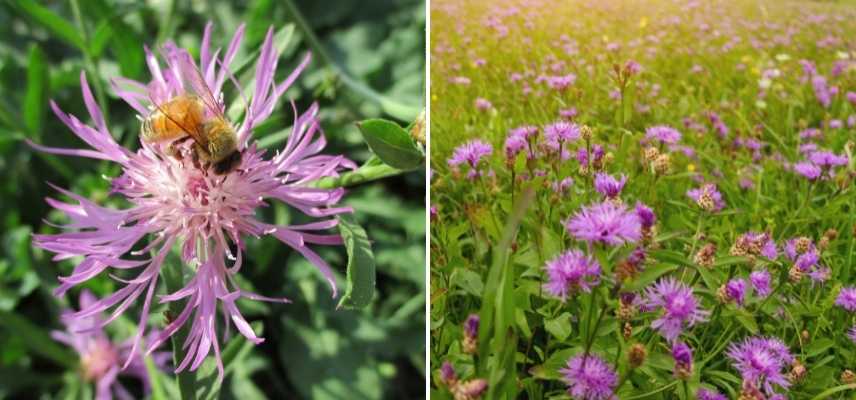
Centaurea jacea
Discover other Melliferous perennials
View all →Available in 0 sizes
Available in 1 sizes
Available in 1 sizes
Available in 1 sizes
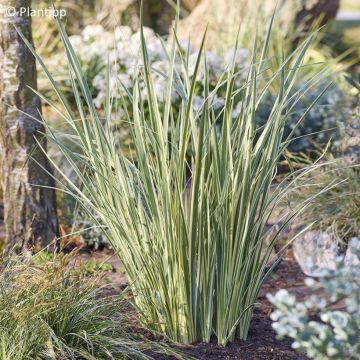
Available in 1 sizes
Available in 1 sizes
Available in 1 sizes
Available in 1 sizes
Available in 2 sizes
Available in 1 sizes
Asters
Iconic perennial of early autumn, Aster is very useful to bees when summer flowering begins to wane. It is also important to plant perennials that allow bees to stock up for their approaching hibernation.
There are over 600 species of this beautiful asteraceae, with varying habits from compact to tall, and colours mostly ranging from white, pink, to blue. Prefer species with single flowers, which allow bees to easily access the centre of the flower, rich in pollen and nectar. Easy to grow and hardy, you can plant Asters novae-angliae in full sun or light shade, preferably in light soil.
You can create a “bee-friendly border” with Asters alongside other late-summer perennials that are highly appreciated by these foragers: Sedums spectabile, Purple Echinaceas, and Buenos Aires Verbenas, which will have delighted this border all summer long.
→ Learn more about Asters in our comprehensive guide.
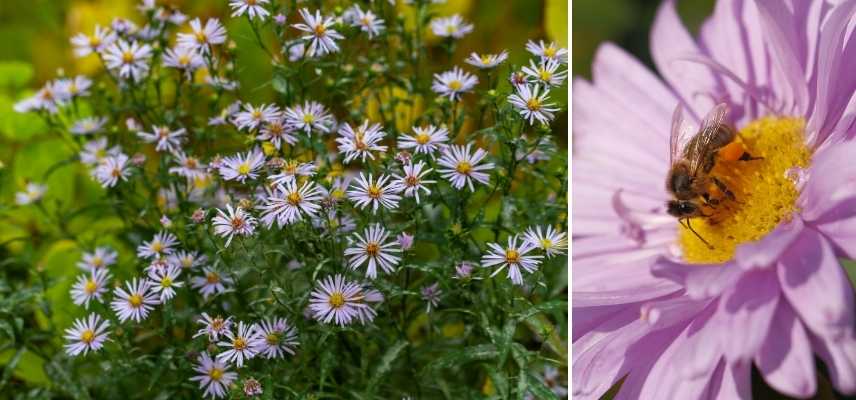
Aster novae angliae
Coreopsis
Coreopsis effectively attract bees: their yellow colour, like blue, is their preferred colour. The capitulum shape of the flower (which is the case for all Asteraceae) provides a perfect landing strip for bees that can easily forage for their pollen. Yellow-flowered Coreopsis are therefore ideal perennials for welcoming bees in a wildflower bed, a generous mix-border, or a rockery. Choose varieties with single flowers, and a very warm orange-yellow hue like Coreopsis auriculata. Blooming for a long time, from May to September, they are very drought-resistant and do not mind full sun exposure. Plant them in dry, light soil.
In a yellow-themed bed, pair Coreopsis with Solidago (goldenrod), which bees also love!
→ Learn more about Coreopsis in our complete guide.
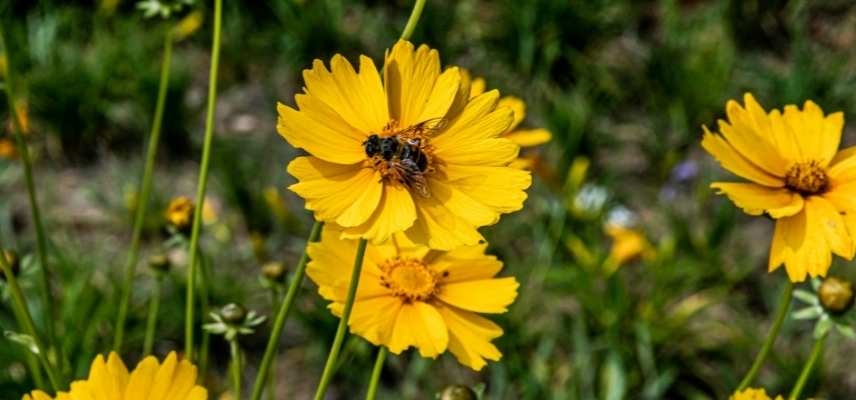
Coreopsis
Helleborus niger
If some winter-flowering bushes like Abeliophyllum distichum, Mahonia, or Lonicera fragrantissima provide most of the food needed for bees at the end of winter (as some must occasionally leave the hive despite hibernating), it can be beneficial to plant a few Hellebores in the garden. The botanical Christmas roses or Helleborus niger will be an excellent way to replenish pollen and nectar resources for the start of colonies emerging from winter. Their long flowering period from January to March is therefore a boon for foragers and a delight for the ornamental garden. Also known as the black Hellebore, its dark green, slightly dentate evergreen foliage adds to its appeal. The Christmas rose prefers partial shade and rich, slightly calcareous soils.
→ Learn more about Hellebores in our comprehensive guide
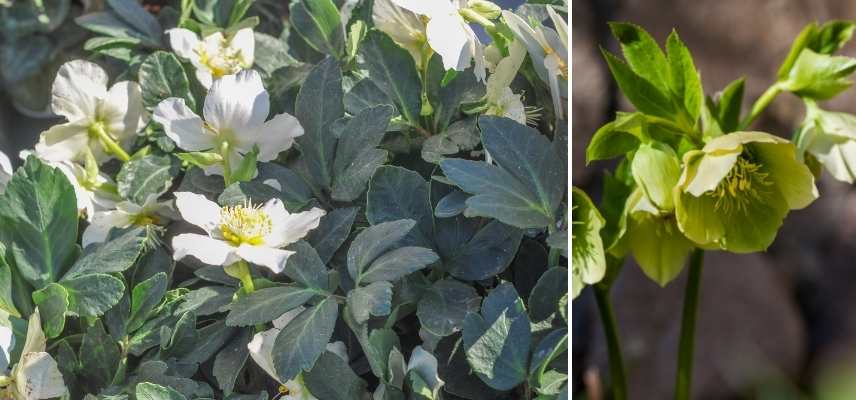
Helleborus niger
Erysimum cheiri
Wallflower (Erysimum cheiri) is another interesting plant that provides bees with nourishment at the end of winter. From March to April, it attracts them with its warm-toned inflorescences, often bicoloured, ranging from orange to red. Typically grown as a biennial, you can sow it in pots or rockeries, …or it will take care of that itself, just be sure to keep it in check! Notable for its rapid growth and sweet, honeyed fragrance, it is a lovely low perennial (about 30 to 40 cm) to brighten up the early spring!
→ Learn more about wallflowers in our comprehensive guide.
Foeniculum vulgare
Here is a beautiful and large perennial that is very useful to bees in generous borders, rockeries, or the vegetable garden: the common fennel offers its magnificent yellow umbels all summer long. The multitude of small flowers is a real boon for bees, providing them with plenty of pollen. This plant self-seeds spontaneously if you leave a few heads in place. Foeniculum vulgare grows to about 2 m tall and will need dry, well-drained soil to thrive. You can plant some bronze fennels, with their purplish foliage, which is also very ornamental. Flowering between August and September, it is an essential melliferous perennial! Pair it in a wildflower meadow with the white mullein, which also delights bees.
Ajuga reptans
Also known as creeping bugle, this perennial with bright blue flowers is a nectar source for bees. They find a convenient flower shape to feed on: the spikes are composed of two lips on which they can easily land (as bees do on Digitalis, for example). Unlike other melliferous plants that usually require a lot of sunlight, Ajuga reptans thrives in shaded environments, allowing these creeping perennials to be planted in cooler areas of the garden. Its flowering is early, from April to July. This evergreen ground cover is ideally planted in cool, moist soil.
→ Learn more about Ajuga reptans in our complete article.
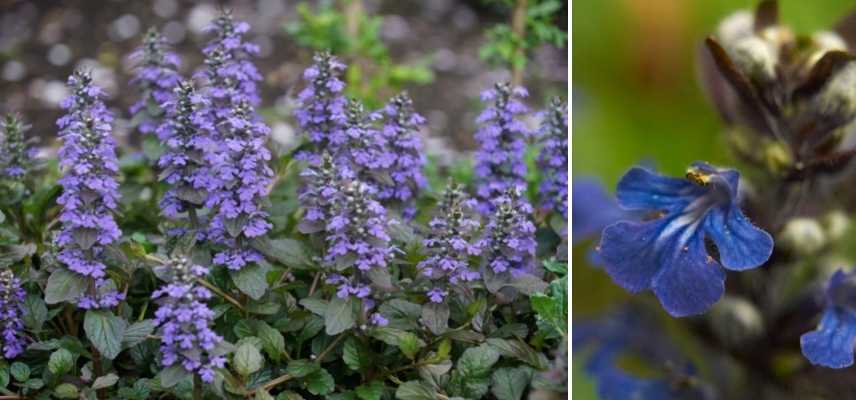
Ajuga reptans
Sages
Part of the Lamiaceae family, sage is an essential perennial to install in the garden to attract bees. All aromatic-leaved sages are actually interesting for pollinators. Among the wild sages most visited by bees, we can mention clary sage (Salvia sclarea), particularly fragrant, which attracts the carpenter bee (Xylocopa). Sages bloom for a long time, from June to September, or even October depending on the climate, providing continuous food. Meadow sage (Salvia pratensis) is another species loved by bees, which also collect nectar from it. Sages grow to different heights, mostly forming very ornamental clumps, ranging from 70 cm to 1.20 m tall (for the large clary sage).
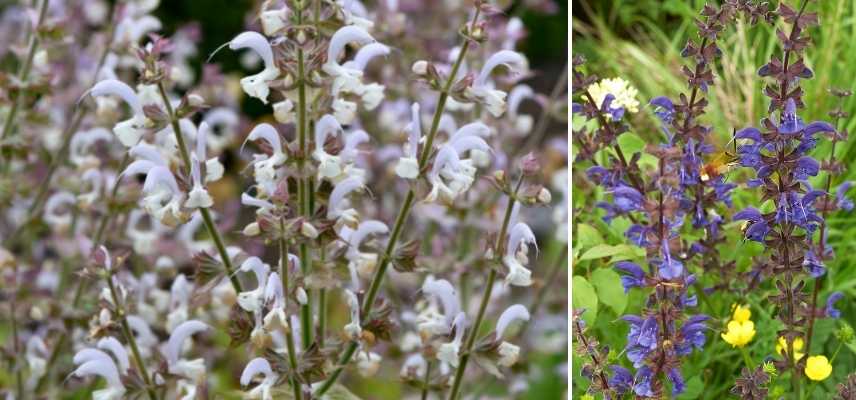
Salvia sclarea and Salvia pratensis
Valerian
Another perennial with a long flowering period that delights both melliferous and wild bees for months on end! Centranthus ruber, more commonly known as Red Valerian, is a stunning perennial bearing carmine-pink flowers that is wonderfully resilient to both drought and severe cold, making it a plant for the future in our gardens! From May to September, its numerous funnel-shaped flowers, gathered in cymes, provide a splendid burst of colour in the garden, which should be maintained by cutting back faded inflorescences to encourage new blooms. More than just hardy, it can be planted in any well-drained soil, even poor ones. It’s also a great perennial to plant in walls, where its trailing habit adds a charming touch. Its glaucous foliage is equally delightful.
→ Learn more about valerian in our comprehensive guide.
Nepeta
Catnip is not only cherished by our four-legged friends! Nepeta, from the family of Lamiaceae, is a boon for pollinators, being a perennial beloved by bees, both for its bluish colour that attracts them and for its long-lasting flowers, which bloom between May and June and again from August to October. The stems are well-ramified and bear spike inflorescences where it is very easy for bees to enter and gather nectar. Extremely hardy, Nepeta only requires well-drained soil and a sunny position.
→ Learn more about Nepeta in our comprehensive guide.
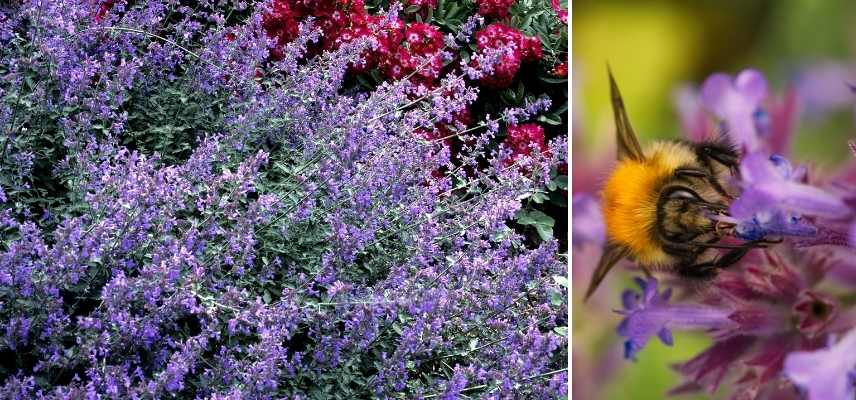
Nepeta cataria
Further reading
Feel free to check the site Franceagrimer (in French): it offers a very good guide to all melliferous plants (from bushes to annuals).
- Subscribe!
- Contents
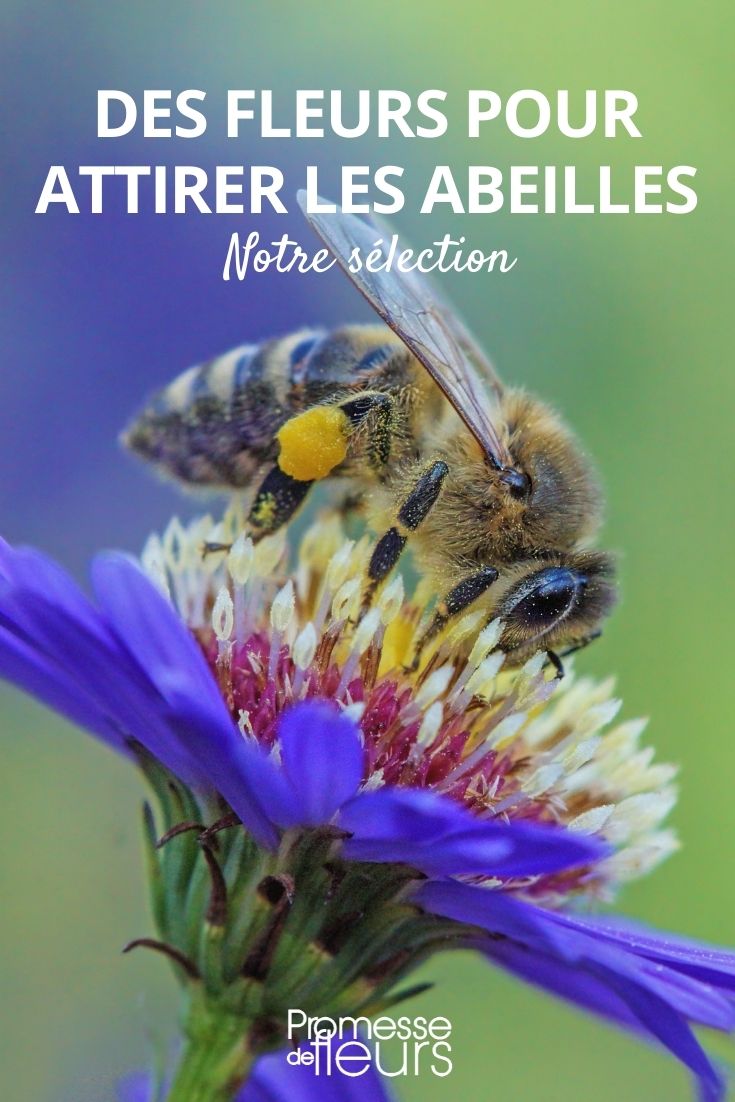































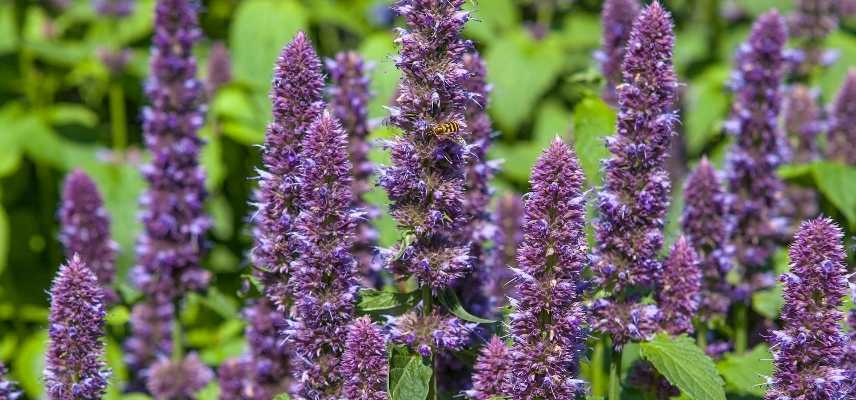
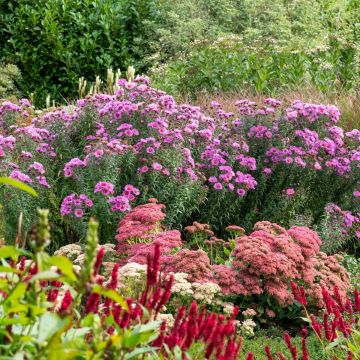
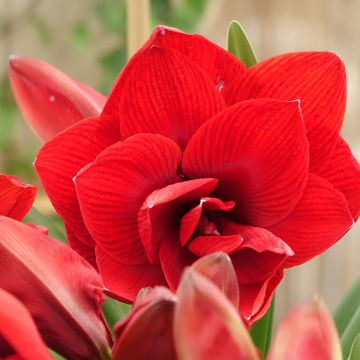


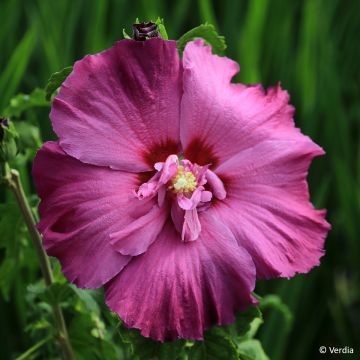
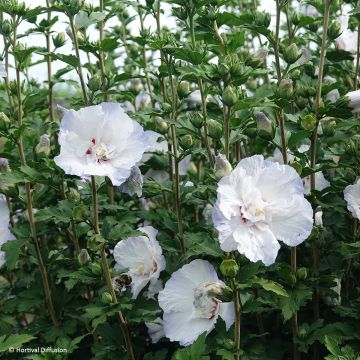
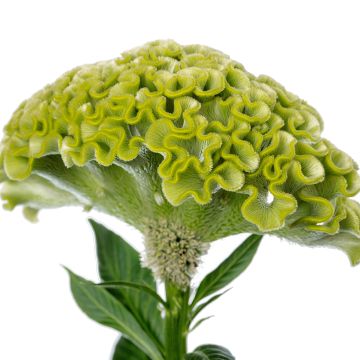
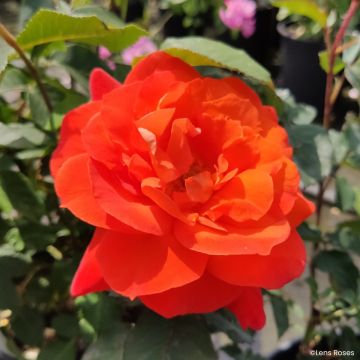
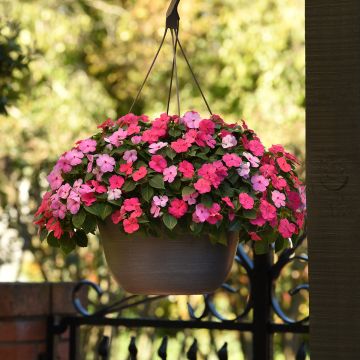
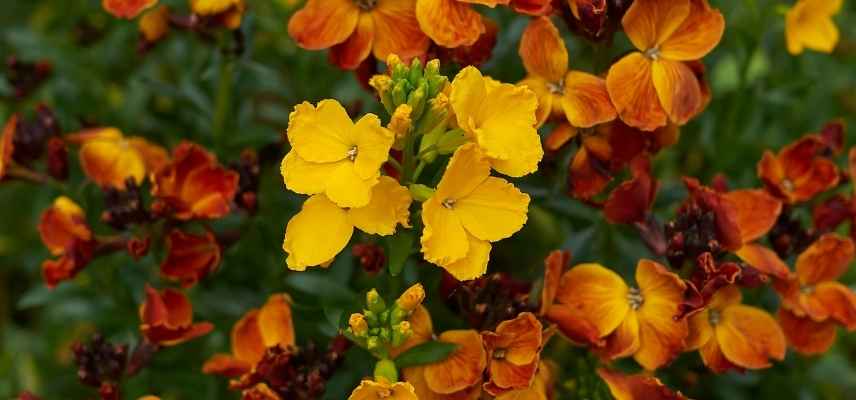
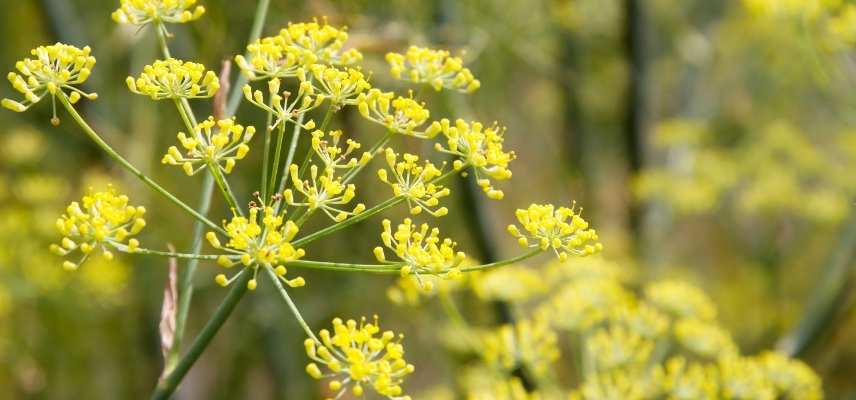
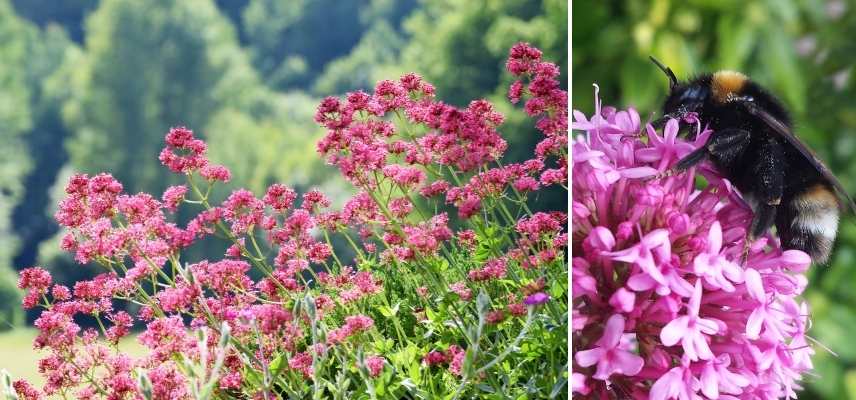
Comments